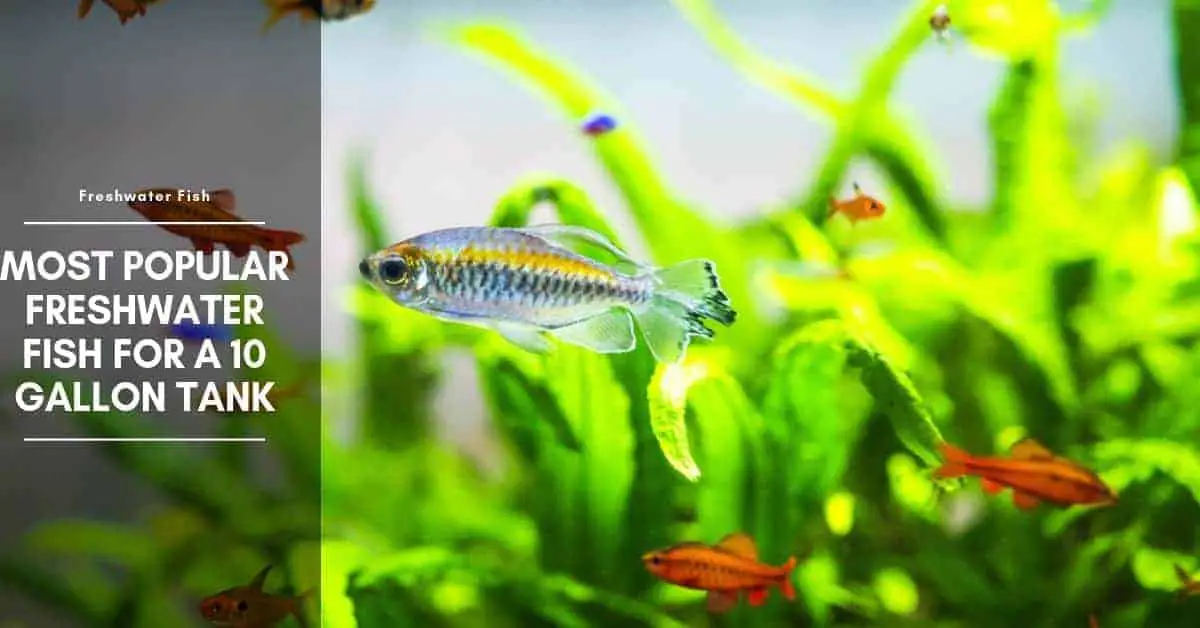In this article, you will find my best freshwater fish for 10 Gallon tank. The only complex thing with having such a small tank is that if you don’t understand the feeding habit and how they adapt to their environment, you are definitely going to hurt these pretty creatures, especially when you have fish that shouldn’t be in the tank in the first place. If this is your first time you set up a fish tank, you need to check that you have all the necessary equipment.
The main goal of this article is to let you know my recommendation for the best fish for 10 gallon tank, and here is the list:
- Mickey Mouse Platy Fish
- Guppy Fish
- Kubotai Rasbora
- White Cloud Mountain Minnow
- Cherry Barb
- Kuhli Loach
- Killifish
- Red Pencilfish
- Dwarf Gourami
- Thicklip Gourami
Tropical fish make ideal pets for children. Unlike larger animals, such as cats and dogs, fish do not have to be taken for walks or require grooming. They have to be fed, and the tank has to be cleaned, but this is a comparatively gentle introduction to the responsibilities of caring for a living creature.
The expense of keeping tropical fish depends very much on the size of the aquarium you choose. The biggest cost is the initial purchase of the aquarium, cabinet, and equipment needed to run it efficiently.
Buy the very best that you can afford. General running costs are quite low: some everyday foods can be prepared for consumption by fish, and some live foods, such as daphnia or cyclops, can be collected from local ponds or streams.
A few nicely shaped, large pebbles can be collected during a walk on a beach. Always remember to boil, scrub, and thoroughly sterilize them before placing them in your 10-gallon aquarium.
Thin pieces of rock or slate can be bonded together using aquarium silicone sealant to make caves or hiding places for your fish. (Tip: do not use bathroom sealants in your aquarium.
They have various color pigments in them, which are toxic to your fish.) Short pieces of plastic pipe can be bonded together and then coated in gravel so that they will blend into the aquarium setup, again to make hideaways for your fish.
Mickey Mouse Platy Fish
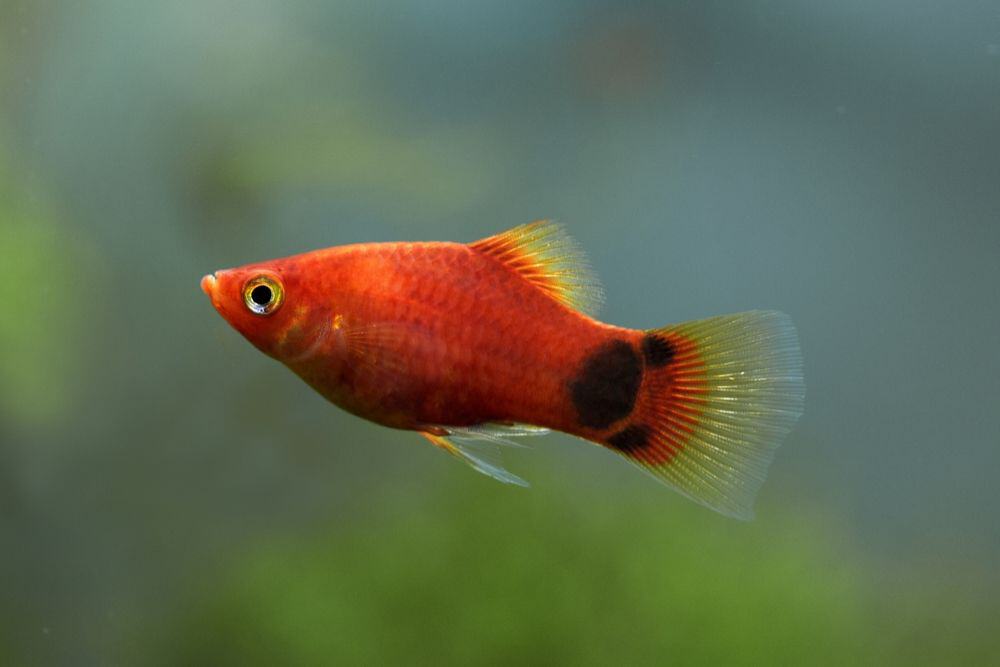
This Platy fish is
I love the color it has from the gold-like body to black tail. Advisably you should have a male and two females in the same tank. Easy to care for and feeding is also simple too, their diet should include flake, live or frozen food.
API STRESS COAT Aquarium Water Conditioner 16-Ounce Bottle
Tetra AquaSafe Plus, 8.45 Ounces, aquarium Water Conditioner And Dechlorinator, Model Number: 46798162681
$10.19 (as of December 14, 2025 08:19 GMT +03:00 - More infoProduct prices and availability are accurate as of the date/time indicated and are subject to change. Any price and availability information displayed on [relevant Amazon Site(s), as applicable] at the time of purchase will apply to the purchase of this product.)API TAP WATER CONDITIONER Aquarium Water Conditioner 16-Ounce Bottle
$8.48 (as of December 14, 2025 08:19 GMT +03:00 - More infoProduct prices and availability are accurate as of the date/time indicated and are subject to change. Any price and availability information displayed on [relevant Amazon Site(s), as applicable] at the time of purchase will apply to the purchase of this product.)| Care Level | Easy |
| Temperament | Peaceful |
| Diet | Omnivore |
| Water Conditions | 65-76° F, pH 7.0-8.2 |
| Maximum Size | 2.5″ |
Guppy Fish
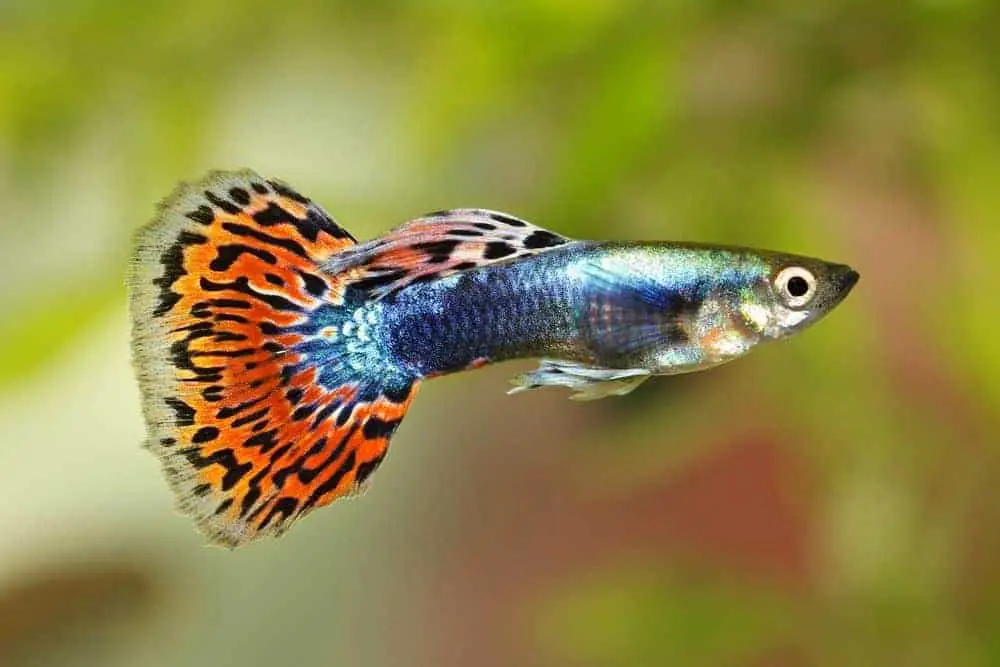
The Guppy fish needs no introduction, if you are into the aquarium and fish business, this name shouldn’t come as a surprise, very attractive, the Guppy Fish like the Platy Fish is easy to care for. The number of Guppy fish that should be in your 10-Gallon Tank should not be more than 4, you don’t want the males fighting each other. Guppy Fish should be fed with a high-quality flake daily, complement that with frozen daphnia, blood-worms and brine shrimp, lastly, you can add a bit of vegetable matter in their diet, it helps.
| Care Level | Easy |
| Temperament | Peaceful |
| Diet | Omnivore |
| Water Conditions | 65-80° F, pH 5.8-8.0 |
| Maximum Size | 2.5″ |
Kubotai Rasbora
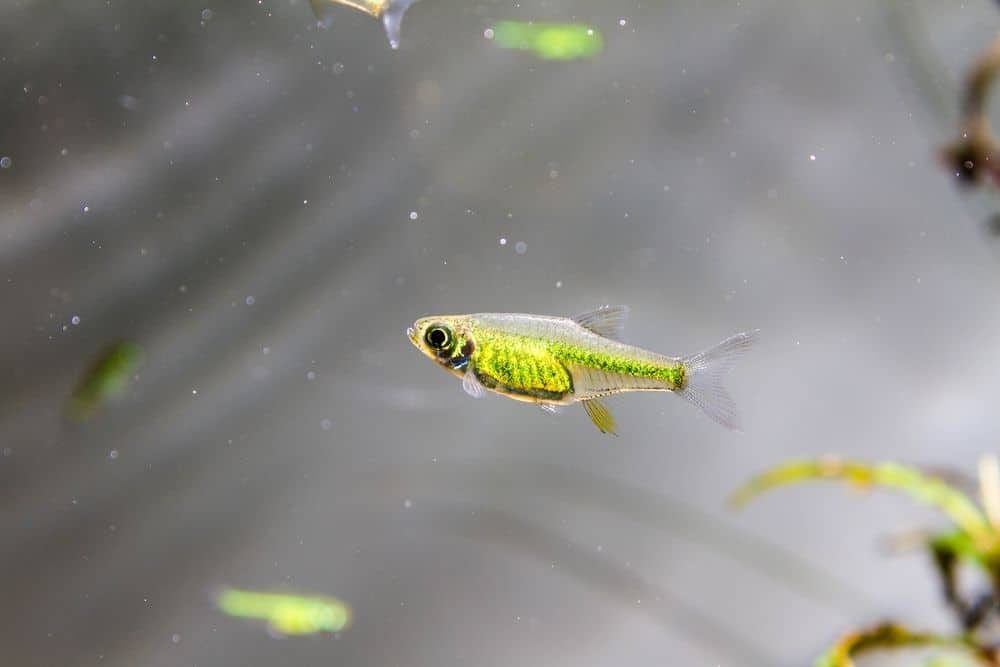
The
| Care Level | Easy |
| Temperament | Peaceful |
| Diet | Omnivore |
| Water Conditions | 68-76° F, pH 6.0-6.8 |
| Maximum Size | 2″ |
White Cloud Mountain Minnow
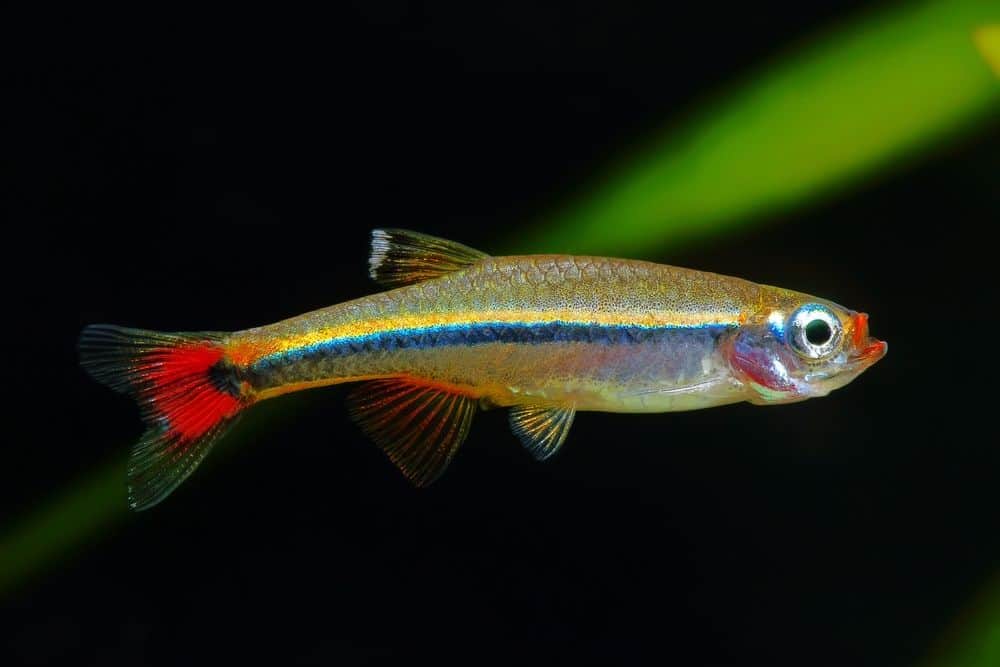
If you are new to this, the White Cloud Mountain Minnow is a perfect fish for you, the simplicity in how they live makes them one of the best options, very nice and simple to care for. They are very peaceful and would live comfortably with other fishes like bettas as they are not really demanding.
Make sure you’ve added some roots, leaves, and fluctuant in their tank, all of this is just to make sure they get that feeling of living in their natural habitat. They are a micro predator and so they feed on worms, crustaceans, small insects, and other zooplankton.
Once settled and established in an aquarium, this is a really hardy fish and is ideal for a new aquarium. It will accept a wide variety of water conditions without too many problems. It can also be kept in cooler water but is much more active at tropical temperatures.
It is a very colorful fish, with brown-to-bronze body color, a fluorescent-green line running the full length of the body, a bright-red tail, and red fringes to the dorsal and anal fin. They look their best when swimming in a good-sized shoal. They are very easy to breed but need dense plants so that the eggs are left alone.
| Care Level | Easy |
| Temperament | Peaceful |
| Diet | Omnivore |
| Water Conditions | 62-76° F, pH 6.6-7.8 |
| Maximum Size | 2″ |
Cherry Barb
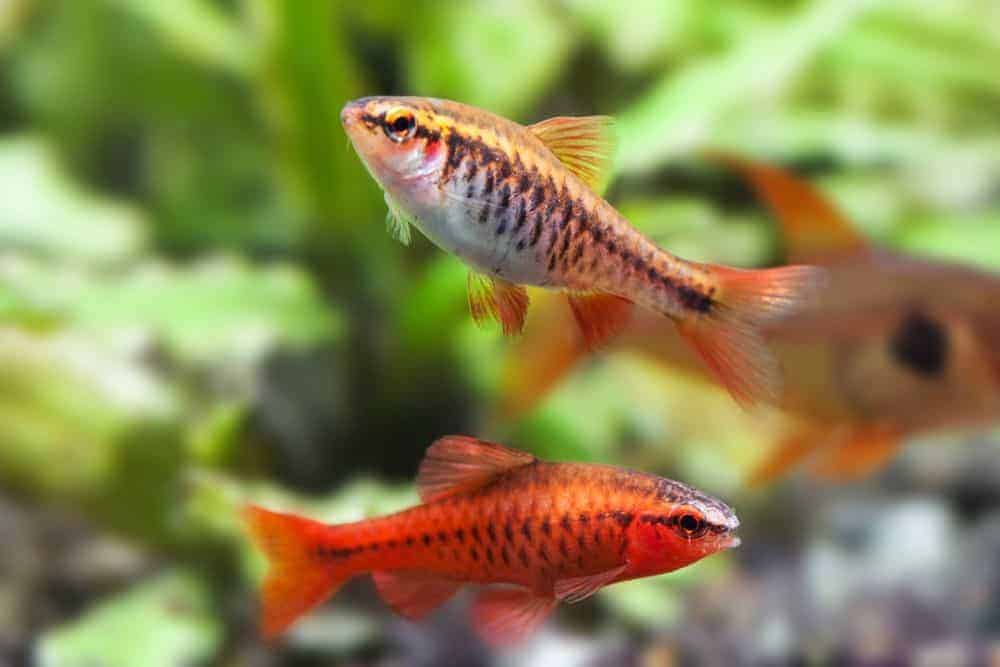
The Cherry barb can be complex to deal with as they are always nervous around other species, it also feels that way with its kind. So, the best thing to do is to keep it isolated. But, if what you want is to get the best color out of it which I must say can be amazing to watch, then, you can keep the Cherry Barb with other fish like rainbow fish species.
Still, on the color, they have a deep red cherry-like color and during spawning can go deeper, during the spawning process, the male turns bright red. On the aquarist Experience Level, it ranks as a beginner, feed-wise, the Cherry Barb are Omnivores, they feed on live food such as shrimps, worms, and other little fishes, you can also add meat and vegetables to their diet for healthy growth.
Barbs have a poor reputation as community fish, but the cherry barb is an exception and makes a suitable addition to any aquarium. Only when the fish have grown to maturity does the male show the full color from which its name is derived. When in breeding condition, the fish is cherry red all over, fins included, but the female has weaker coloration.
They are an exceptionally popular fish because of their peaceful nature and attractiveness. When ready to court, the male swims around the female, spreading his fins to such an extent that you would think that they would split. When they have laid their eggs the adults must be removed, otherwise, they will go hunting for the eggs and eat them.
| Care Level | Easy |
| Temperament | Peaceful |
| Diet | Omnivore |
| Water Conditions | 74-80° F, pH 6.3-7.2 |
| Maximum Size | 2″ |
Kuhli Loach
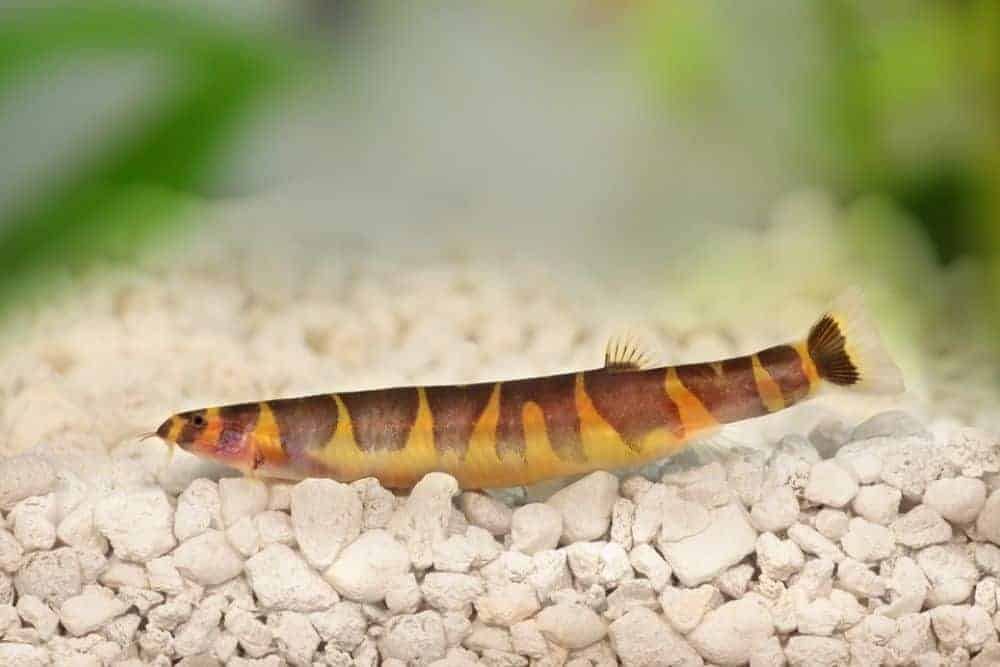
The Kuhli Loach is a bottom-dwelling fish that enjoys burrowing in sand and looking around for hiding places. What I find attractive about this fish is its catfish-like face an eel-like body and the color is the best part, they have dark brown bands that cover their skin, though the subspecies determines the color. Socially Kuhli Loach is very peaceful. And they should be around other species that are not aggressive too, it’s totally a bad idea to keep a Kuhli fish with aggressive and territorial fish like the Cichlids. They enjoy live foods the most.
The markings on the fish that are sold as Kuhli loaches are exceptionally variable. Some have a band all the way around the body; others have bands extending only halfway still more just have a line of large dots across the center of the back, running the hill length of the body. They have an eel-like appearance and are so quick that it is almost impossible to catch them in a planted tank.
Kuhli loaches swim very fast from one area to another and then settle down for a while. Generally, they swim close to the bottom of the aquarium and make excellent scavengers, eating any food missed by the other inhabitants. They are known to be group-spawners, and the females are plumper than the males, but this is about all that is known of their breeding habits.
| Care Level | Moderate |
| Temperament | Peaceful |
| Diet | Carnivore |
| Water Conditions | 78-86° F, pH 6.0-6.7 |
| Maximum Size | 5″ |
Killifish
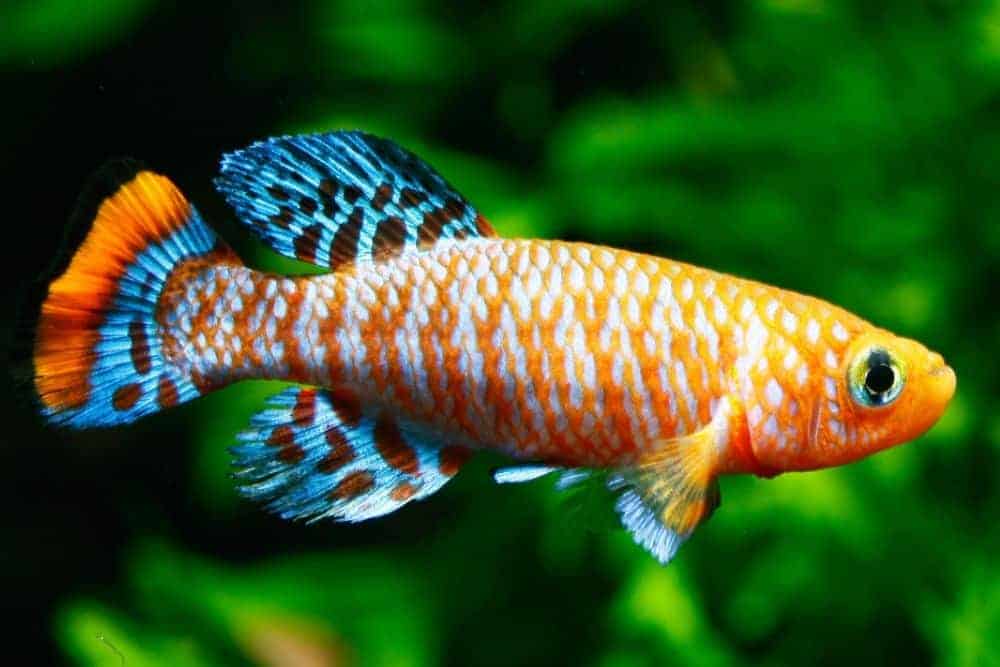
If you are new to this, I suggest you learn more about them before keeping them, even though keeping them can be a good thing, you still need to gather all the experience you can to be able to keep them appropriately. I’m talking about more than a year’s experience. On the care level, it ranks in the level of “Easy-Difficult” and they are species-dependent. Most killifish species are very peaceful but they live well with other species. But if this is your first time of doing something like this, we suggest that you keep a pair of killifish in a species only tank. They are carnivores, so they feed only on the meet and live food. Killifish species can be found here.
| Care Level | Easy |
| Temperament | Peaceful |
| Diet | Carnivore |
| Water Conditions | 72-76° F, pH 6.0-7.2 |
| Maximum Size | 2.5″ |
Red Pencilfish
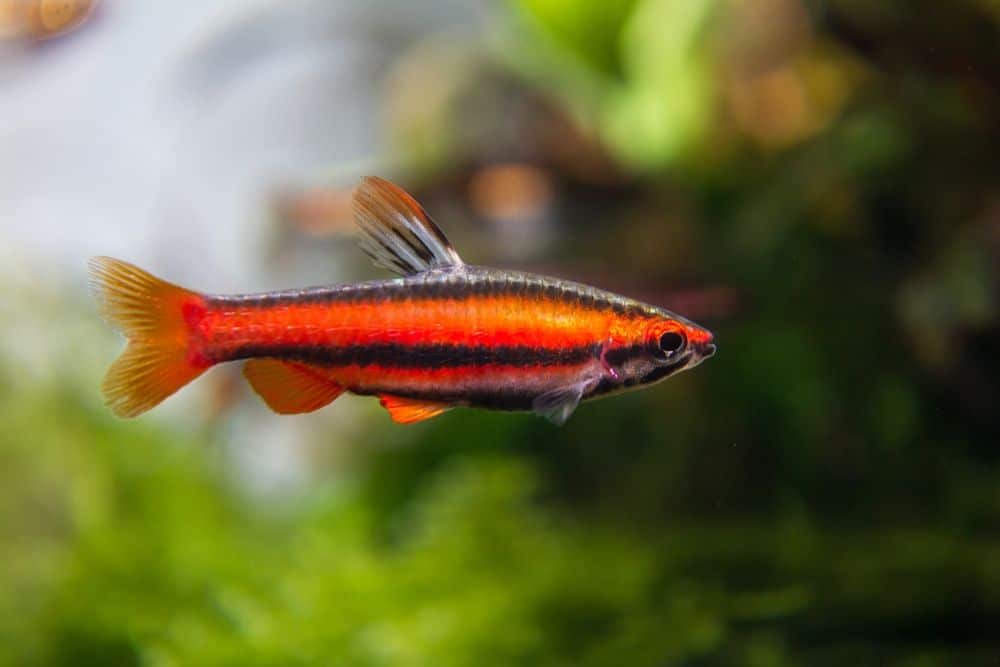
The Red Pencilfish lifespan is 3-5 years. It’s OK to keep the Red Pencilfish around other species, the only problem is, they shouldn’t be kept with territorial tank mates, they are not overactive, due to their small size they can live in small areas. You should feed them with high-quality flakes, and brine shrimps. Feeding them twice daily is a good idea, they don’t have a big mouth to eat that much.
| Care Level | Moderate |
| Temperament | Peaceful |
| Diet | Omnivore |
| Water Conditions | 70-82° F, pH 5.8-7.2 |
| Maximum Size | 2″ |
Dwarf Gourami
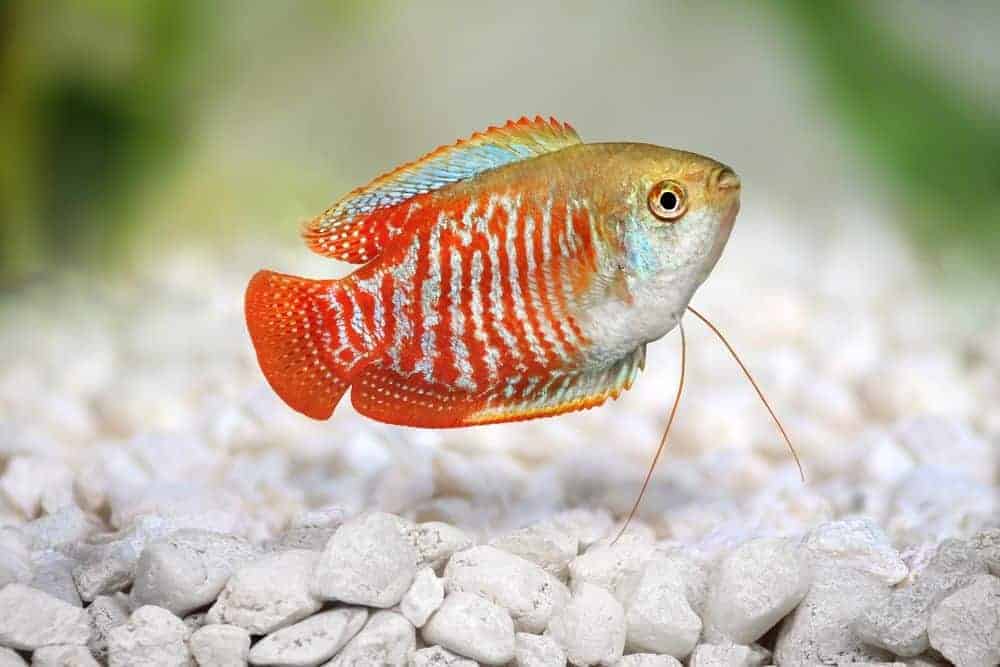
Also known as flame Gourami, the Dwarf Gourami is a peaceful and shy fish. They are also known as labyrinth fish, what this meant is that they breath from the air with their lung-like labyrinth organ, that’s why they need to have access to the water’s surface all the time. They are an omnivore and for that, they should be fed with algae.
The male dwarf gourami is an absolutely striking fish. With its many bright-red lines, made up of small spots running from the top to the bottom of its body, and fins of metallic blue, with red spotting all over them, there is every reason to have it in your aquarium. There is also a sky-blue cheek patch on both sides of its head.
The ventral fins on this fish are used as feelers, sensing what it touches, and they are used constantly. The female is silvery in color and has very faint lines of blue running down her body, so they are very easy to identify. Breeding is very similar to the Siamese fighting fish (see page 91), except that the male is not quite as aggressive. Males of this species will coexist without any problems.
| Care Level | Moderate |
| Temperament | Peaceful |
| Diet | Omnivore |
| Water Conditions | 72-82° F, pH 6.0-7.8 |
| Maximum Size | 2″ |
Thicklip Gourami
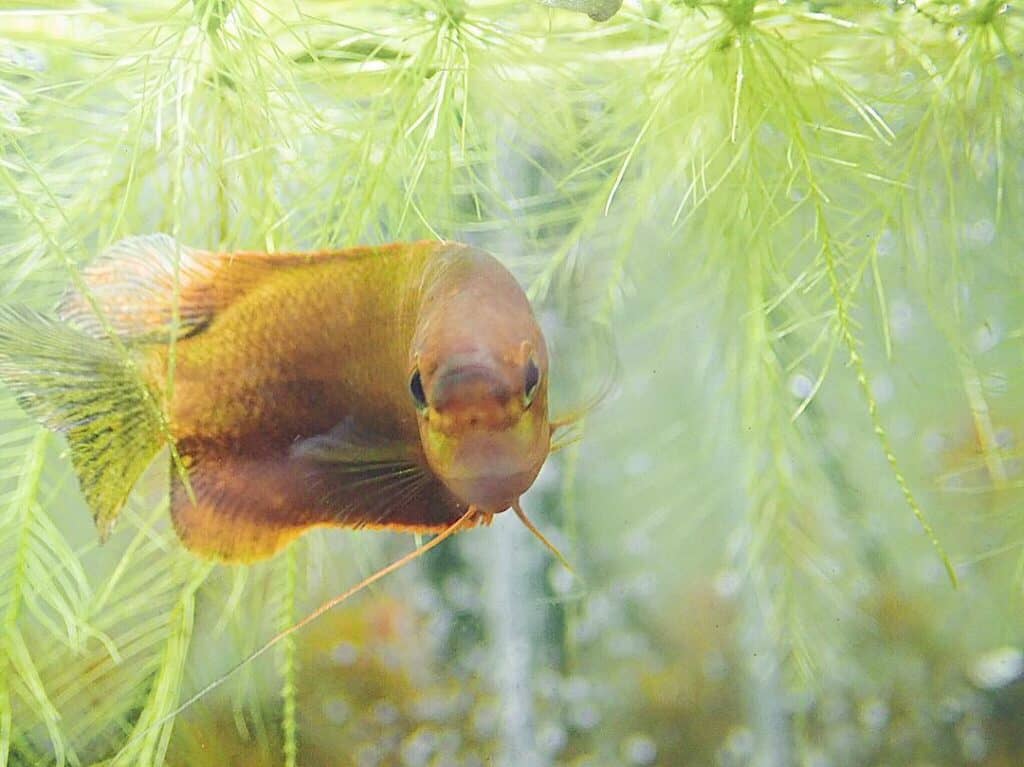
A very close relative of the Indian giant gourami , the thicklip gourami is a species in its own right. Although bodily the same shape, the thicklip gourami does not grow to quite the same size as the Indian giant gourami. The male normally has a chocolate-brown body, with metallic-blue bars, but they are closer together than the Indian giant gourami markings. The lips are dark blue, which accentuates their size.
The female is much lighter in her coloration. When in breeding condition, the male’s color changes almost to black. Both fish swim with their ventral tins pointed in front of them to sense what is in the water. As with nearly all gouramis, they are easy to feed on a diet of live, frozen, and flake food. They also enjoy occasional supplements of mosquito larvae, natural food for them in the wild.
| Care Level | Moderate |
| Temperament | Peaceful |
| Diet | All foods |
| Water Conditions | 72-82° F, pH 6.5-7.6 |
| Maximum Size | 3″ |
Conclusion
At the end of the day, if you are really passionate about this, then you need to start doing your own research, there are tons of things you don’t know about this species, that’s why increasing your own knowledge and experience will help you know the do’s, don’ts and more importantly the fish and aquarium care for all of them. You are on that path now, choose your best freshwater fish for 10 Gallon tank wisely.

Hi, my name is Sean, and I’m the primary writer on the site. I’m blogging mostly about freshwater and saltwater aquariums, fish, invertebrates, and plants. I’m experienced in the fishkeeping hobby for many years. Over the years I have kept many tanks, and have recently begun getting more serious in wanting to become a professional aquarist. All my knowledge comes from experience and reading forums and a lot of informative sites. In pursuit of becoming a professional, I also want to inspire as many people as I can to pick up this hobby and keep the public interest growing.
Read more about Sean.
Please join also my Facebook group.

